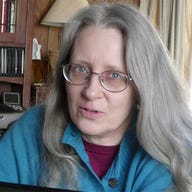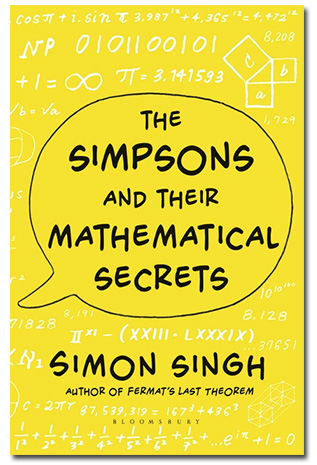The Simpsons and Their Mathematical Secrets, review: Figures of fun

Simon Singh has had a difficult time since 2008, when he published his last book, Trick or Treatment?, written with Edzard Ernst. A single sentence from that book, republished in the Guardian, came to the attention of the British Chiropractic Association, which promptly sued for libel. The resulting case became a cause célèbre, and although Singh eventually won and used the case as a platform from which to campaign successfully for libel law reform, it cost him a fair amount of money and five years in which writing his next book was too much to think about.

It's understandable, therefore, that, when he did get back to work, Singh would revisit the lighter and less contentious idea he had in 2005 before he got sidetracked into alternative medicine. The Simpsons and Their Mathematical Secrets is the result.
Probably unknown to most fans of the yellow-skinned inhabitants of Springfield, a surprisingly high percentage of the writers of The Simpsons and its futuristic sibling, Futurama, have high-class backgrounds in mathematics. Several have bachelor's degrees in maths or physics from Harvard, two have PhDs (one from Harvard and one from Princeton), and a number have published papers in respected academic journals. Jeff Westbrook — one of the PhDs — even taught at Yale and worked at AT&T Research before turning to comedy; he has an Erdös number of 3.
Matt Selman, who studied English and history rather than mathematics, gives Singh a plausible explanation: "I think the mathematical mind lends itself to writing very silly jokes because logic is at the heart of mathematics. The more you think about logic, the more you have fun twisting and morphing it. I think the logical mind finds great humour in illogic". Beyond that, Al Jean, one of the Harvard graduates, suggests that an animated show, where the writers can dictate every detail in a way they can't on live action shows with actors who have their own ideas about performance, is a lot like pure mathematics. Of course, there's another reason they don't mention why these writers have not (yet) gravitated to other shows: The Simpsons is the longest-running show in US television history. Until it goes off the air, they've got jobs. Why should they go anywhere else?
You'll find jokes about Fermat's theorem (the topic of a previous Singh book), topology, statistics and many more complicated puzzles and games.
For fans, the book provides an opportunity to go back over episodes where some of the mathematical detail got missed the first time round, particularly the freeze-frame mathematical jokes made possible by VCRs and, even more, DVDs. For everyone else, the book is still a fine introduction to the more recreational aspects of mathematics: you'll find jokes about Fermat's theorem (the topic of a previous Singh book), topology, statistics and many more complicated puzzles and games. As Singh puts it, "the writers of The Simpsons and Futurama have been smuggling complex mathematical ideas onto prime-time television for almost a quarter of a century".
Singh is working too far in the open to be smuggling anything. But here's a chance for the post-Martin Gardner generation to learn, in a light-hearted but serious way, about irrational numbers, Klein bottles, and probability theory, ponder whether P=NP, and understand that, no matter what the Indiana legislature tried to do in 1897, pi will always be 3.14159… And just in time for Christmas, too.
The Simpsons and Their Mathematical Secrets
By Simon Singh
Bloomsbury
256 pages
ISBN 978-1-4088-3530-2
Price £18.99